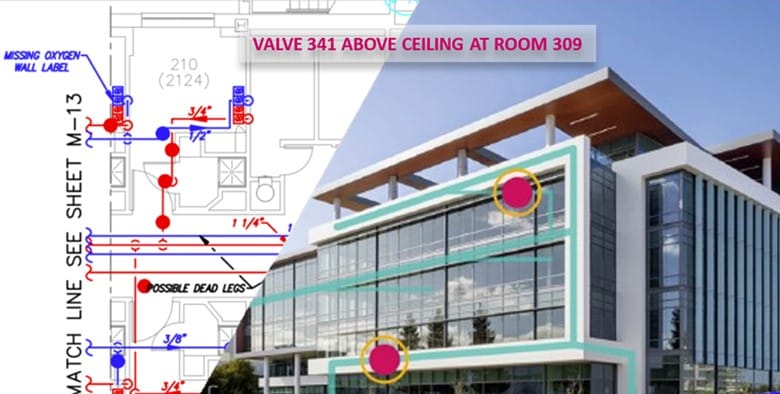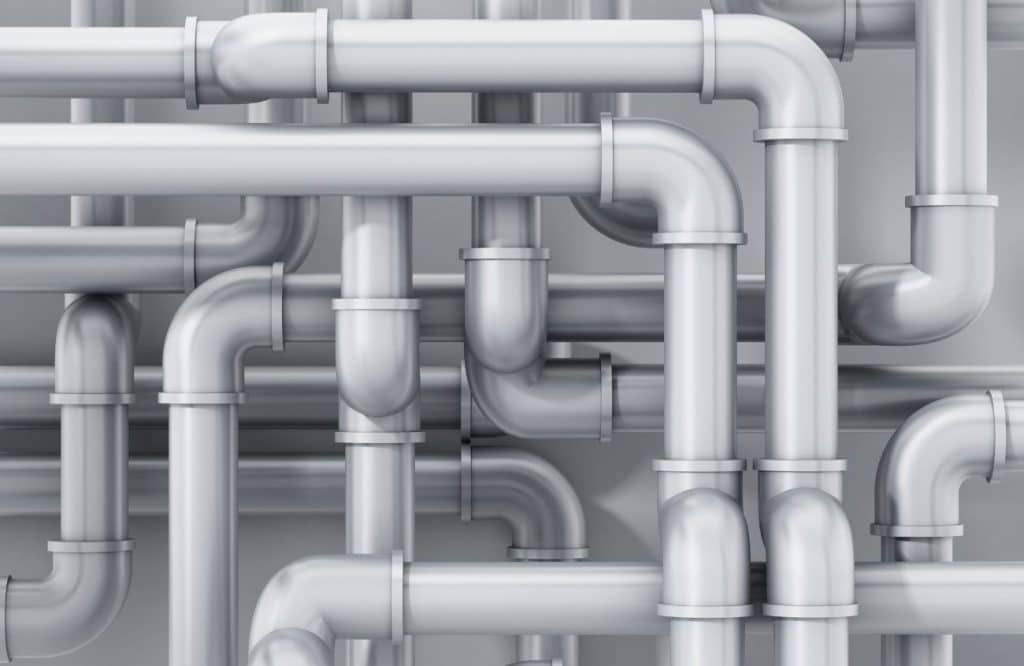Water is a precious resource with unique functions in healthcare. Not only do patients and employees need drinking water, but potable water is essential for cleaning, disinfecting, and safely conducting myriad patient care activities. Whether a natural disaster or water main break causes a disruption in water service, or an internal contamination event limits the useability of the water, your healthcare facility must be prepared to maintain essential operations, correct problems in a timely manner, and ensure patient safety.
Top 10 Piping Issues Facing Healthcare Facilities & How to Solve Them
Emergency Water Supply Plan
In the case your facility’s water supply is disrupted or limited, you need to have an emergency water supply plan (EWSP) that aligns with regulations, accreditation requirements, and your water management efforts. The EWSP acts as a reference point and guides your facility’s response to a problem with your water supply. It should outline:
- What operations are essential and will continue
- What operations are non-essential and will cease
- How facility operations may change to accommodate limited supply
- Where your facility will obtain alternative water supply if necessary
- What documents and schematics are needed for access to critical control points like valves and pumps
Water Use Audit & Essential Functions
The first step to developing an EWSP is to conduct a water use audit. This helps you identify how much water your facility uses during normal operations, what areas of operation require the most water, and where conservation efforts can be applied. Utilize your water system records over time—ideally, for at least the last year—to estimate average daily water usage.
Compile a complete list of the buildings within your facility that use water and, if possible, obtain average water usage statistics for each building. This is also a good time to determine what operations are essential and approximately how much water they require. Be sure to differentiate between essential operations for the facility as a whole and specific activities that require significant water supply.
Water Conservation & Restriction
Each facility is unique—in size, operational focus, and water requirements. When looking at your hospital or healthcare facility, find ways to limit water usage for non-essential procedures and strategically adjust operations to eliminate water waste.
What operations will be paused when your water supply is disrupted? Some healthcare facilities may cancel elective or non-emergency surgeries, use waterless hygiene products, or shut off water to predetermined buildings. Take time to outline how new patients will be triaged or transferred to make the most of the water supply your facility has.
Water restriction decisions and their severity depend on:
- The remaining main water supply and expected duration of the interruption
- The availability of water through an alternative source
- The number and status of patients and staff in the facility
Alternative Water Supply
To maintain some level of operation during an outage, your facility should identify alternative sources of water. Maintain a supply of bottled water as a potable water source for drinking or cooking. Determine whether your facility has access to a back-up water supply such as nearby groundwater wells. Consider using non-potable water for HVAC purposes or other functions that don’t require a potable source.
Partner with third party vendors who can provide support and an alternative supply of water during an emergency. These vendors can deliver potable water via tanker truck or other methods during a service disruption. Establish these contracts proactively to ensure they are ready and able to serve your facility when the time comes.
For more on developing an emergency water supply plan, see the CDC’s in-depth guide.
Contamination Response
Outages and service disruptions aren’t the only water-related emergencies that can happen to healthcare facilities. Water contamination presents a significant risk to hospitals and other healthcare facilities, especially with the increased vulnerability of the impacted population—compromised patients. Contamination can occur within the facility’s system or as a result of a service disruption and subsequent backflow event. And beyond the need to protect patients and staff from contamination, accrediting bodies require hospitals and other healthcare facilities to have a recovery response plan for contamination events—regardless of the source.
Water Management Plan
Water management plans proactively address the risks of contamination. From conducting a facility-wide survey that identifies critical control points (CCPs) to preventive maintenance planning and developing control measures, effective water management programs include and go beyond chemical treatment.
Risk Assessment & Exposure Reduction
Conduct a water infection control risk assessment (WICRA) as part of your water management plan to identify points of use and areas that could threaten patient safety. The risk assessment should outline potential modes of transmission for contamination, as well as patient susceptibility to waterborne bacteria.
It’s helpful to conduct this type of risk assessment alongside a survey of your entire piping system, eliminating cross-connections, ensuring the proper placement and functioning of backflow preventers, and ensuring in-depth knowledge of the system with detailed piping schematics.
For more on conducting a water infection control risk assessment, see the CDC’s template.
A full inventory and evaluation of all CCPs should be included as part of this risk assessment. As you identify high-risk points of use, you can more effectively prevent contamination and reduce the risk of patient harm.
System and point-of-use design can minimize potential patient exposure to bacteria. Areas prone to stagnation, areas at risk of splashing and surface contamination, and other potentially hazardous parts of the system should be designed, built, and maintained to reduce these risks. From splash-resistant to sinks to drain and faucet design to water pressure monitoring to chemical treatment of pipes, steps can be taken to proactively mitigate the risk of exposure to contaminants.
Piping Schematics
Following the survey and risk assessment, your facility should invest in the development of detailed, as-installed piping schematics. These schematics help you maintain and rapidly respond to breakdowns and emergencies, mitigating the risk of contamination as much as possible and improving access to critical control valves.

Reliable schematics provide critical information and allow facility personnel to easily navigate the piping system, ensure proper maintenance of the pipes and backflow preventers, and effectively respond in a contamination or service disruption event. Schematics outline the contents of the pipe, the location of critical shut-off valves, flow direction, pipe labels, and more. If contamination does occur, being able to quickly identify the source of the problem and shut off any interconnections or points of use can be life saving for patients.
Ready to learn more about how HydroCorp can support your healthcare facility’s piping infrastructure, knowledge, and safety?


